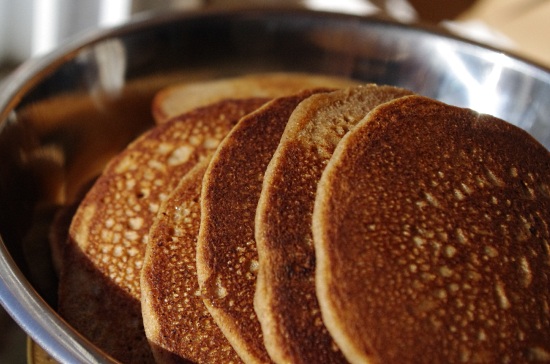Curtido (fresh or fermented)

Cortido – or curtido, depending on who you ask – has always been a ferment to me. Adding some Mexican oregano, garlic, and carrot transforms basic kraut into a Latin American-inspired tangy condiment great on just about anything.
So I am not really sure if in some cultures it was fermented while in other it wasn’t. Or maybe, like in my own kitchen, you served it fresh at times but when you needed to preserve that food, you let lactic acid fermentation do the job for you. In either case, you end up with a tangy, flavorful slaw/kraut with a great crunch and great versatility. We like it on tacos, beans, eggs, stews, potatoes, salads, and more. We like cortido so much, in fact, that a recipe for Summer Squash Cortido ended up in Traditionally Fermented Foods.
.jpeg/EMa9t9YFGBQgBygH/AjRrYboTavoxWLZYZMvNIpOdI6ld2y8RPhp7PJ7D4Xw?size=1280x960&size_mode=3)
So when Amanda sent me a copy of her book Latin American Paleo Cooking I happily jumped at the opportunity to share this recipe with you. The book is a lovely collection of recipes put together by her and her Puerto Rican Mother-In-Law, all made free from grains, dairy, and sugar.
Besides many options for flavorful meats, vegetables, and tropical starches, there are four sections of the book I found particularly inspiring. The first is the recipes for things like arepas and pupusas made entirely grain-free. In addition, the authors have devoted entire sections to flavorful, inspiring sauces as well as Latin American treats made from ingredients like coconut flour, tapioca starch, and natural sweeteners. Most notable, I think, are the two recipes for cheese that Toress offers – a queso blanco and a cheddar-like cheese both made dairy-free.
In the end I found the recipes from Amanda and her Mother-In-Law both heartwarming in sentiment and inspiring in the kitchen.
Curtido (Spicy Cabbage Slaw)
Reprinted with permission from Latin American Paleo Cooking by Amanda Torres with Milagros Torres, Page Street Publishing Co. 2017. Photo credit: Toni Zernik
Serves 4 to 6
Ingredients
- 1 small head green cabbage, sliced very thinly or grated
- 4 carrots, grated
- 1 medium onion, thinly sliced and cut about 1″ (2.5 cm) long
- 2 fresh jalapeño peppers, diced and seeded, or 1 to 2 cloves garlic, minced
- 2 tsp (12 g) fine Himalayan salt
- 2 tsp (4 g) dried oregano
- ½ cup (120 ml) filtered water
- ½ cup (120 ml) apple cider vinegar
Directions
In a large, nonreactive bowl, combine all the ingredients and stir well. Depending on how large your cabbage is, you may need to add a bit more vinegar and water. Place it in the fridge for 15 minutes before serving. The flavors will continue to develop as it sits. Serve a generous portion alongside Pupusas con Chicharrón o “Queso” (page 63). Store in an airtight container in the fridge for up to 3 to 4 days.
Shannon’s Fermentation Note: You can omit the apple cider vinegar and some of the water and ferment this exact same recipe for a tangy, fermented curtido. Change the salt measurement to 2 Tablespoons and massage it into the vegetables until a brine begins to form, adding a bit of water as needed and additional salt if the vegetables do not taste well-seasoned. Pack into 2-3 pint jars, leaving at least 1.5 inches of head space and then use a fermentation weight to hold the veggies below the level of the brine. Allow it to ferment for at least 1-2 weeks, burping the jars at least once per day as needed. Serve as stated above and place in cold storage for longer keeping.



Could this curtido be canned for long-term storage? Many thanks!
Noemi – I would think so, especially if it is fully fermented. I believe you can look online or in books for canning directions for sauerkraut and, assuming the cortido is good and tangy, simply follow those.
Thanks for this post. I had ordered your book a couple weeks ago(FANTASTIC JOB, by the way), and I think cordito will be the first recipe I try. I’ll have to add this new recipe to the menu as well. Thanks again!!